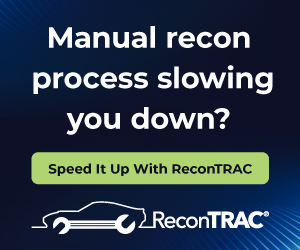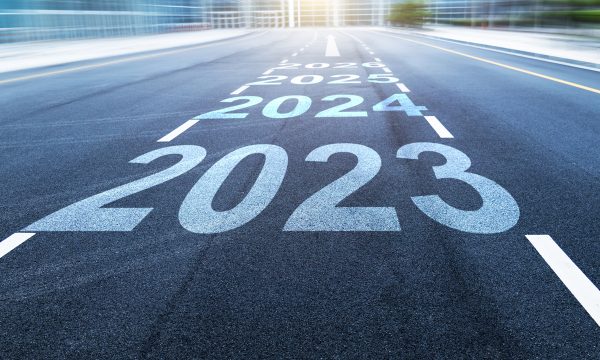Dealers are facing one of the most uncertain periods in their history. Time will tell how it will unfold. Stay vigilant.

The challenges facing automobile dealers are increasing at an alarming rate. The forces of nature that historically impacted automobile dealership operations are giving way to a wider array of uncontrollable factors.
For example, gone are the days when new inventory was readily available and dealerships were able to conduct normal and somewhat predictable business activities. Dealerships no longer appear to control their destiny.
Dealerships, as we all know, are complex enterprises that demand substantial capital investment and constant vigilance. As franchise operations, dealers are tied to the brands they exclusively represent.
Some brands, however, are grappling with the complexities of meeting numerous government regulations and EV adoption rates across various global jurisdictions.
In the case of Canada, a smaller player, decisions that impact Canadian operations are often made from outside our borders. This, coupled with the government of Canada’s regulations, creates a unique set of challenges for Canadian dealerships.
For franchised dealerships, the business model has evolved beyond sourcing, stocking, displaying, and reselling new vehicle inventory. A significant complication has always been the acceptance of used vehicle trades as partial payment for new vehicle sales.
This seemingly straightforward transaction introduces a level of complexity and risk far exceeding that of a typical garden variety retailer. Dealerships rely on a stable and predictable used vehicle market, using them as currency in their new vehicle sales process. This heavy reliance on the used vehicle market significantly increases dealership risk as a business compared to other retailers.
We are all living through the infancy of the conversion from traditional internal combustion engine vehicles to electrified ones. Although somewhat controversial in some circles, the goal is to achieve positive impacts on the global environment.
Moreover, dealerships are also responsible for assisting customers with vehicle financing and providing ongoing customer and vehicle care throughout the customers’ vehicle ownership period. If done right and their represented brand’s product portfolio continues to appeal, ideally, the goal is securing each customer’s future vehicle business for life.
We are all living through the infancy of the conversion from traditional internal combustion engine vehicles to electrified ones. Although somewhat controversial in some circles, the goal is to achieve positive impacts on the global environment.
Different jurisdictions have different approaches, both internationally and domestically, making compliance and investment choices a challenge for vehicle manufacturers.
The implications of these challenges are felt right down the supply chain through to dealerships and consumers. Many mixed messages, false starts and an abundance of confusion are becoming more common. It could be argued that this is normal during a period of significant change. However, only time will tell. Until then, things will be messy.
With new technologies comes increased opportunities for new entrants. In North America, the stable of vehicle brands has been consistent for decades. Not anymore. Vehicle electrification presents an opportunity for innovation and greater competition.
This competition will challenge the historical norms and have the effect of fragmenting market share in many communities. The one good thing, from a dealer perspective, is that the franchise dealership model is being adopted by new entrants more than not.
From a dealer perspective, the one bad thing is that further investment will be required to remain in a strong competitive position. As with all new entrants, investment will be required before sales materialize. This increases the short-term risk for dealers.
While all this conversion is taking place over the next decade or so, brands are still producing internal combustion vehicles. The distribution of those vehicles will still fall under the brand image and distribution requirements.
Likely, additional investment will be required by existing franchise dealers to maintain their current franchise rights. The school is still out on whether some brands will require two separate distribution channels, one for internal combustion vehicles and the other for electrified vehicles.
Also, some brands may initially attempt a direct-to-consumer approach however, in the longer term, consumers will likely want the services provided by a physical location. This too, in the short term, will prove to be messy for some brands and their dealers.
We are also bombarded with stories about AI and trust and how to use AI responsibly in our businesses. The evolution and adoption of AI have been rapid, and the pace of acceptance will only accelerate.
Our challenge as dealers is choosing how to use AI responsibly to benefit our dealership operations and customers. Many internal functions of typical automobile dealerships — human resources and finance, to name two — are ripe for AI applications.
On the other side, however, cybersecurity presents very real risks to dealerships daily. The increase in technology usage, both within our dealerships and within the vehicles we sell and service, provides an environment that needs constant protection from access by unwanted outsiders.
Dealerships are vulnerable to the ebbs and flows of consumer behaviour. At the moment, there seems to be an imbalance between what consumers want versus what they can afford.
Vehicle prices, both new and used, have increased from pre-pandemic levels while prices in general have increased. Consumers’ income levels generally have not kept pace, causing consumers to make economic choices as to what to do and how to make purchases.
For example, the basic costs of housing, food, and keeping their vehicles on the road cause many consumers to feel significant financial pressures.
On the employee side, dealerships are feeling the pinch there as well. The pandemic created employment uncertainty, which has not yet normalized. Dealerships are having difficulty keeping and recruiting the necessary skills and employment levels to run their businesses efficiently.
The general shift in employee attitude has been significant, affecting certain employees’ dependability and productivity. As a result, dealerships have had to be very creative in adjusting processes and providing greater flexibility to employees. Whether this is sustainable is the question.
Our business in 2024 and 2025 will remain challenging. Hopefully, the current headwinds will subside in the next 18 months as many of the factors contributing to the present uncertainties will have begun to resolve themselves.
Some of the factors currently being experienced, however, will not resolve and perhaps might become embedded in our future permanently.
The message here is to manage the realities that your dealership(s) face today, make the best decisions you can with the information you have, and not bank on forces outside your control to resolve themselves. If they do, that will be a bonus.
For now, dealerships find themselves between a rock and a hard place and, as such, will continue to be challenged on many fronts. There does seem to be light at the end of the tunnel, but it is still far off.















